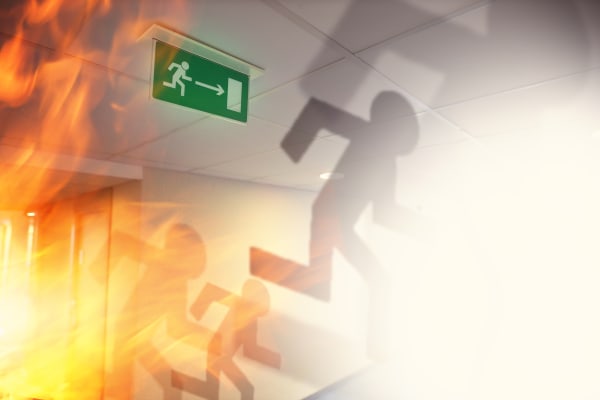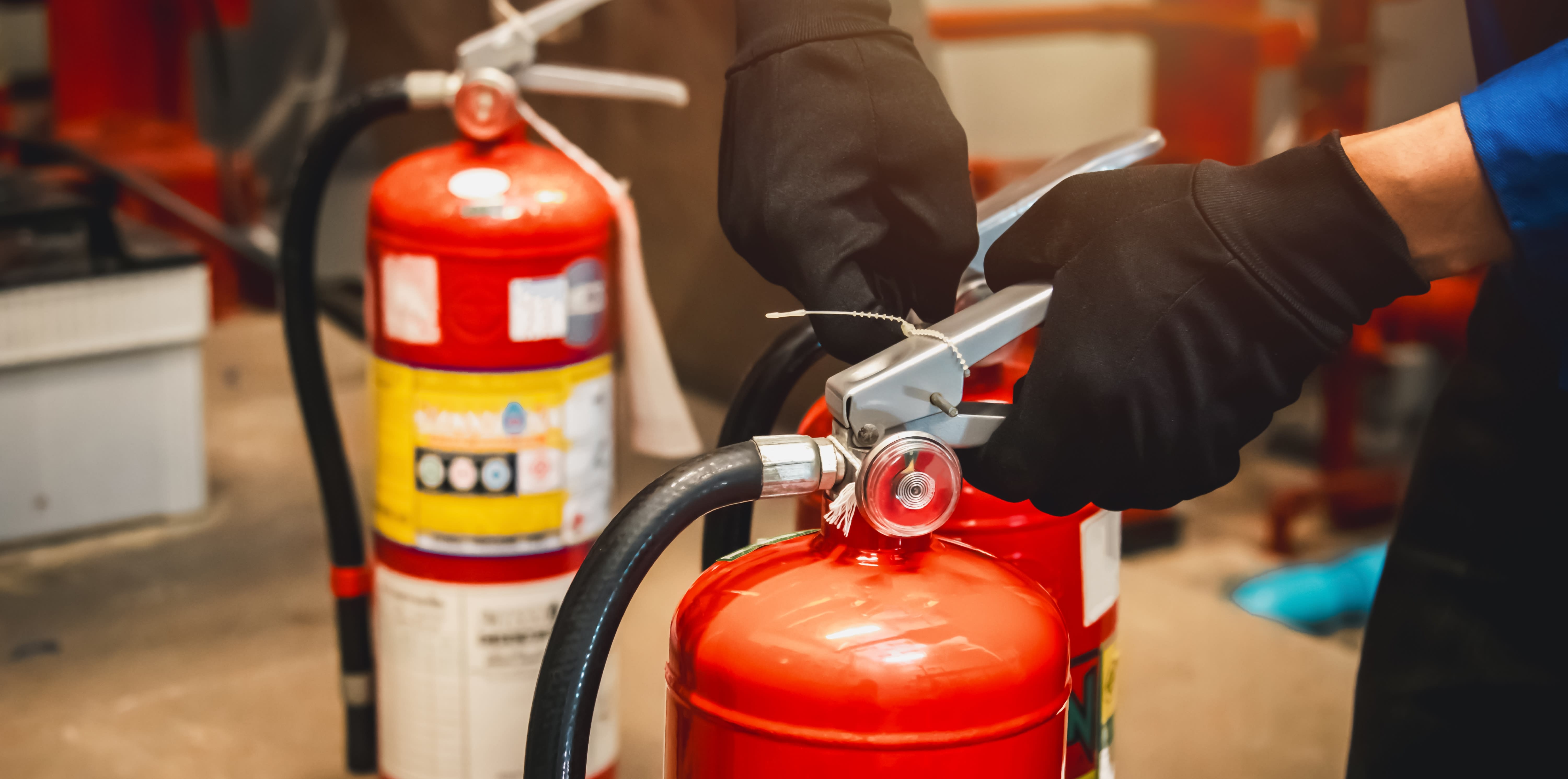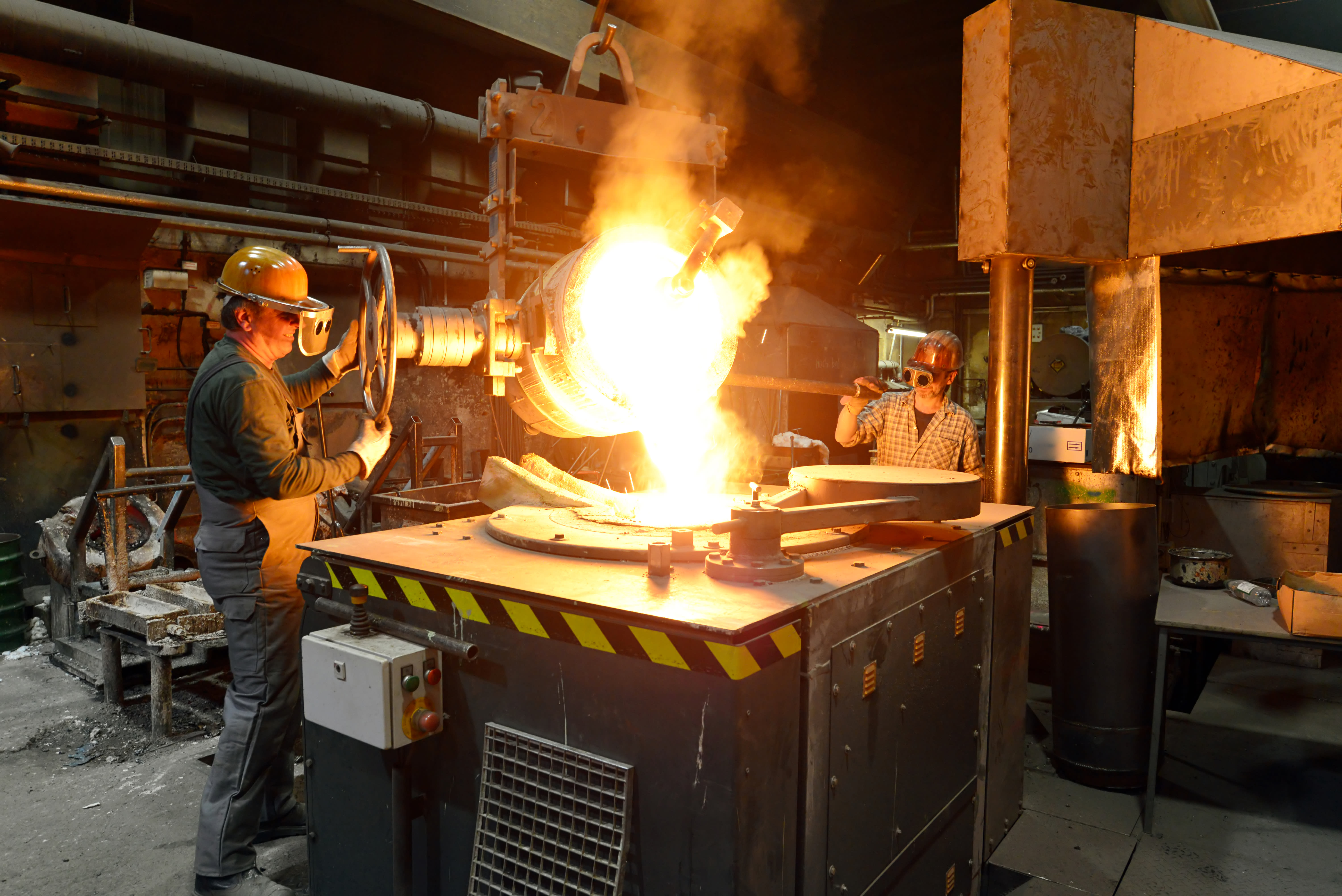Common Causes of Workplace Fires

When a fire breaks out in the workplace it puts everyone at risk of accident and injury, and also risks significant property damage to the site. In the most recent statistics from the Home Office, fires caused annual damage costing a total of £12.0 billion, averaging £25,000 of damage per fire attended by emergency services1. This level of economic and social cost can have a massive impact on businesses, affecting the productivity of their staff and reducing profits at best, and at worst, leading to them shutting down. While many workplace hazards and factors can contribute to a fire, some are more likely to cause them than others.
To help reduce the risk of fires in the workplace, Phoenix recommends providing all staff with Fire Awareness Training, which can be completed in less than an hour. It’s also necessary to have a designated person responsible for fire safety on site. This individual needs a thorough knowledge of fire safety to help keep the members of your organisation safe. By studying the NEBOSH Certificate in Fire Safety, they can learn everything they need for the role, from how to design emergency evacuation procedures to how to conduct fire risk assessments.
Even if you have these training courses in place, it can still be useful to know the most common causes of workplace fires, so you can identify potential hazards if you spot them. In this article, one of our fire safety trainers, Stewart Galway, takes us through the 5 most common causes of workplace fires, so you know what to keep an eye out for. He’s also provide you with key tips on how to reduce the risk of and prevent workplace fires, helping your organisation protect staff and their premises.

5 Common Causes of Fires in the Workplace
Faulty Equipment and Electricals
Appliances and electricals have been the most common cause of fires in recent years, accounting for 29% of all fires (2).
It's easy to take the function of electricals and workplace equipment for granted. We use them every day which means wear and tear are bound to accumulate over time. Whether it be damaged wires or cables, outdated equipment or overloaded circuits, there are many ways that faulty electricals and equipment can lead to fires. Even built-up static electricity is enough to ignite flammable substances.
This is why it's crucial to properly maintain equipment and electricals, conducting regular checks and tests to ensure everything is functioning as it should be. And this doesn't only go for machinery and workplace computers. Kettles, toasters and microwaves should all be maintained too, especially if they’re kept in staff rooms or kitchens with cooking equipment and hobs. Under The Electricity at Work Regulations 1989, employers are required to keep any electrical equipment that has the potential to cause injury in a safe condition. This can be achieved by regular PAT testing and maintenance work.
Lack of Training
Another common cause of workplace fires is a lack of training, which includes human error and negligence.
If members of your team are not familiar with how fires are caused or how to prevent them, they may make errors which increase the risk of fires without realising. This could include overloading electrical sockets with five different appliances, blocking fire exits with boxes or cleaning equipment, or panicking in the event of a fire because they do not know where their nearest fire assembly point is. These errors can lead to an increased risk of fires in the workplace and can also Increase the risk of injury and accident, should a fire break out.
Giving every member of your team an awareness of fire safety and best practice can help reduce the risk of fires in your workplace. At Phoenix, we offer the Fire Safety Awareness short course, which provides a breakdown of how fires are caused and how to prevent them in just 40 minutes, through a clear and concise e-Learning course, perfect for any member of the team.
In addition to training, conducting fire drills helps your team learn what to do in the event of a fire, including where the nearest fire exits are and where to assemble after leaving the building or premises. Conducting these every few months can keep the procedure fresh in your team’s mind and demonstrates your organisation’s commitment to effective health and safety practices.
Improper storage of flammable materials
The improper storage of flammable materials Is also a common cause of workplace fires.
When you hear the phrase ‘flammable materials’, your mind may picture cannisters of fuel, chemicals or other hazardous substances. However, flammable materials can also include paper, cleaning products, cooking supplies and body sprays, all of which are likely present in your workplace. Each of these materials can burn easily if ignited, so it’s important to be wary of where they’re stored, especially in relation to any sources of ignition in your workplace.
To avoid the ignition of flammable materials, it’s best practice to keep chemicals and hazardous substances off site or contained in their own independent buildings. When handling flammable materials, individuals should also use the recommended PPE such as gloves and goggles to prevent accident and injury. As for more common fuel sources such as paper, cardboard and aerosols, so long as team members are wary of where the materials are stored, it’s easy to keep fire risk to a minimum. That means keeping aerosols and cleaning supplies in cabinets, cupboards or bags, and clearing away cardboard boxes promptly following deliveries.

Outdated Fire Risk Assessments
The fourth common cause of fires we’ll cover in this post is outdated Fire Risk Assessments.
A fire risk assessment is one of the most effective ways to manage and reduce the risk of fires in any workplace. They can help organisations identify fire hazards and implement safety measures based upon them, helping everyone stay safe from fires on site. Conducting fire risk assessments is also a legal requirement for organisations according to the Regulatory Reform (Fire Safety) Order 2005. Unfortunately, it’s not enough to just complete a single risk assessment and leave it displayed for the next few years, as It’s also your responsibility to keep the fire risk assessment up to date. That means conducting a new assessment regularly, whether it be every 6 months or annually, and also making a new assessment whenever there’s a significant change to the workplace. This could include when you acquire new equipment, new flammable materials, or move to a new site entirely.
If you need a team member on site to conduct regular fire risk assessments, you can get them trained quickly and effectively with Phoenix’s Fire Risk Assessment Training course. Available in-house and through e-Learning, the course gives students all the skills they need to conduct effective risk assessments.
Arson
Arson is a form of criminal damage, so you may not think there's much your organisation can do to reduce the risk, should it be targeted by an arson attack. However, there are a few key safety measures you can take to both reduce the risk of arson attacks occurring, as well as reduce the potential damage of a fire caused by an arson attack. These are:
Keeping flammable materials out of open areas. As we mentioned when discussing flammable materials, it’s best to store them in independent buildings or containers. If left out in the open, they can be a prime target for attempted arson.
CCTV or motion sensors. Using surveillance can help you identify any suspicious persons on or around the site. This can help deter criminals, as well as helping you identify the perpetrators in the event of an arson attack.
Monitoring site access. By limiting site access and monitoring who is present at any given time, you can reduce the chance of unauthorised individuals gaining access to your premises, reducing the risk of arson attacks in the process.
How to prevent workplace fires
There are many ways to prevent and reduce the risk of workplace fires. We’ve touched on several already:
Store flammable materials safely and sensibly, tidying away or disposing of scrap paper and cardboard, and keeping flammable fuels or chemicals contained separately or off site.
Conduct regular fire risk assessments. These help you identify fire hazards, evaluate the level of risk they pose, and propose suitable safety measures to reduce that risk.
Maintain equipment and electricals on site, carrying out PAT tests and regular checks to make sure everything is functioning correctly, with no damaged cables or wires.
And finally, providing your team with effective fire safety training. Doing so can help reduce the risk of fires in your workplace and keep your team members safe. Phoenix offers a range of Fire Safety training courses and qualifications, suitable for a wide variety of industries.

NEBOSH Certificate in Fire Safety
Completable in just four days, the NEBOSH Certificate in Fire Safety, covers detailed knowledge and guidance on fire safety for anyone working in low to medium risk workplaces. This includes how to design emergency evacuation procedures, conduct fire risk assessments and how to reduce the risk of fires in the workplace. It's the ideal qualification for your primary fire safety marshal or health and safety expert to take, helping to demonstrate your organisation’s commitment to reducing the risk of fires and protecting everyone on your premises.
Fire Marshal Training
It's recommended that you should have a fire marshal for every 50 employees working on your site. While they may not need all the knowledge from the NEBOSH Certificate in Fire Safety, they still need to know how to handle evacuations in the event of a fire and identify fire hazards in the workplace. Phoenix’s Fire Marshal Training provides this expertise and more in just a 90-minute e-Learning or half-a-day of in-house training.
Fire Risk Assessment Training
As required by the Regulatory Reform (Fire Safety) Order 2005, your organisation should conduct regular fire risk assessments to reduce the risk of fires in the workplace. You can train several members of your team to conduct them with Phoenix’s Fire Risk Assessment Training course. It can be completed in just 90 minutes via e-Learning, giving you an easy to ensure you’ll always have someone on site to conduct fire risk assessments.
Fire Safety Awareness Training
Even if most members of your team do not have any specific fire safety responsibilities, it’s still your responsibility as a leader and employer to provide them with health and safety training. Phoenix’s Fire Safety Awareness Training is the perfect choice for this and is perfect for new starter packages. It teaches delegates how fires occur and what to do should one break out. By keeping all members of your team educated on fire safety, they’ll know what to do in the event of a fire, helping reduce the risk of injury and accident during emergency procedures and evacuations.
Which of the following are the most likely causes of electrical fires in the workplace?
A: Two of the wall sockets in your office have broken. However, several members of the team need to urgently charge their laptops and phones. They decide to use an extension lead and plug it into a nearby socket, allowing them to charge 5 devices at once using a single plug.
B: Your business has recently moved into a different office. The building is a historic one, and upon arriving on the first day, you realise the wiring and electrics have not been updated in over 25 years. You make a note to contact the owners of the office block at some point this week to get the wiring replaced, but let your team continue to work as usual, as you wouldn't want the business suffering as a result.
C: While on your lunch break there's a power cut. After going to investigate you see that the fuses have tripped and reset them. However, knowing this is a sign they may need to undergo maintenance, you contact a professional electrician to come in and test the fuse later that week.
Answer:
Scenarios A and B could both lead to electrical fires in the workplace. In scenario A, the overloaded plug socket could cause the wiring to melt or catch fire. In scenario B, when someone uses an appliance that requires electrical power, it could cause the outdated wiring to ignite, as it’s not been updated to suit modern electrical equipment.
If you want to know which fire safety courses will be best for your team, or have any questions about fire safety, speak to a member of our team today.
References: